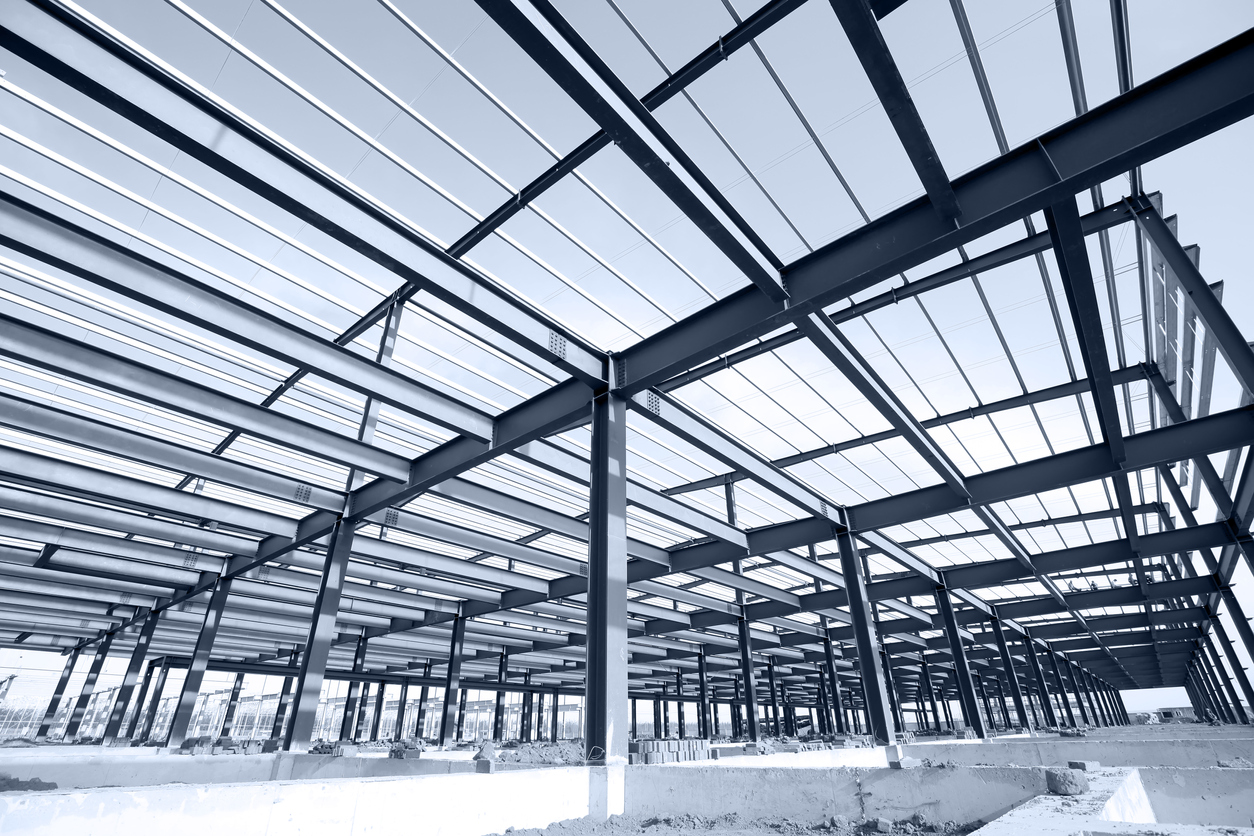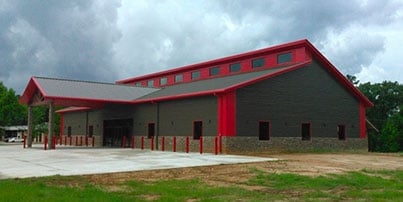Specialist Overview to Steel Building Layout: Making The Most Of Efficiency and Longevity
In the realm of building, the selection of structure material holds extremely important importance in determining the efficiency and longevity of a structure. Steel, with its remarkable stamina, sturdiness, and adaptability, has emerged as a preferred choice for modern-day building design. Engineers and designers are constantly exploring ingenious means to harness the capacity of steel in constructing lasting and long-lasting buildings. From maximizing layout considerations to implementing cost-efficient building techniques, the journey in the direction of taking full advantage of performance and longevity in steel structure design is a complex one, providing a blend of functional difficulties and creative solutions that thrust the sector ahead.
Advantages of Steel Structures
Steel structures supply unequaled resilience and cost-effectiveness compared to standard construction products. The stamina of steel gives exceptional architectural stability, making it a favored choice for structures that need to hold up against extreme climate conditions or heavy lots. Steel is extremely resistant to parasites, mold and mildew, and fire, guaranteeing a longer life expectancy with minimal upkeep demands. In addition, steel is a lasting material, as it is fully recyclable and can be repurposed at the end of its valuable life.
In regards to cost-effectiveness, steel structures are commonly a lot more budget friendly than structures made from other materials. The reliable building and construction procedure of steel buildings can lead to lowered labor expenses and much shorter job timelines. Steel's sturdiness also equates to lower upkeep expenses over time, as there is much less need for replacements or repair work contrasted to traditional structure products.
Layout Factors To Consider for Performance
Provided the advantages of steel buildings in terms of toughness and cost-effectiveness, it is important to concentrate on design considerations that take full advantage of effectiveness and durability. When creating a steel building for optimum effectiveness, factors such as the insulation, positioning, and format should be carefully considered. Effective designs can minimize product waste throughout construction and enhance the functionality of the building. In addition, choosing the ideal orientation can help make the most of all-natural light direct exposure, reducing the requirement for artificial illumination and reducing energy prices.

Additionally, integrating energy-efficient systems, such as heating and cooling, illumination, and renewable energy resources, can even more improve the efficiency of steel structures. By incorporating these design factors to consider, steel frameworks can accomplish optimum effectiveness and durability, offering sustainable and cost-effective services for various building tasks.
Architectural Integrity and Long Life

Regular upkeep, including assessments for indicators of wear or damage, is also critical for recognizing sites and dealing with issues prior to they jeopardize the structure's honesty. By focusing on structural stability in the style stage and throughout the building's life expectancy, owners can guarantee their steel structures remain risk-free, reliable, and long lasting for years to come.
Cost-Effective Building Approaches
Effective building methods anchor play a pivotal role in handling costs without jeopardizing the high quality and integrity of steel building tasks. One cost-effective technique is using pre-engineered steel structure systems. These systems are designed off-site and after that constructed on-site, lowering building and construction time and labor costs. Furthermore, pre-engineered steel buildings are recognized for their longevity and need minimal maintenance, causing long-term cost financial savings.
One more cost-effective method is the design-build approach, where the layout and building and construction phases are incorporated. This method promotes cooperation in between the design and building teams, streamlining the process and reducing delays and price overruns (steel buildings). By involving all stakeholders from the start, possible concerns can be recognized and fixed early, conserving both money and time
Moreover, adopting lasting building techniques, such as using recycled steel and including energy-efficient attributes, can lead to significant price financial savings over time. These methods not just lower building and construction waste but likewise reduced operational prices with boosted power effectiveness. why not try here In final thought, applying cost-efficient building approaches is crucial for taking full advantage of performance and making certain the durability of steel building jobs.
Maintenance Tips for Long Life
Appropriate upkeep methods are essential for making certain the durability and structural honesty of steel structures. Regular inspections are vital to determine any kind of indications of deterioration, damages, or use that can compromise the building's longevity. As component of a comprehensive maintenance plan, it is essential to promptly address any kind of concerns that emerge to avoid them from rising and creating more extensive damages.

Another essential maintenance pointer is to inspect the building's welds, fasteners, and links to ensure they are safe and secure and in great problem. Any type of loose or broken components need to be repaired or changed promptly to keep the structural integrity of the structure. By carrying out a proactive upkeep regimen, steel building owners can make the most of the longevity and efficiency of their frameworks.
Conclusion
In verdict, steel structures use various advantages such as cost-effectiveness, effectiveness, and longevity. By carefully thinking about style aspects, making sure architectural honesty, and using cost-efficient construction approaches, steel structures can be optimized for maximum effectiveness and long life.
From optimizing style factors to consider to implementing cost-efficient building methods, the journey in the direction of maximizing performance and durability in steel structure style is a diverse one, supplying a mix of sensible obstacles and creative solutions that propel the industry onward.
Offered the advantages of steel buildings in terms of sturdiness and cost-effectiveness, it is essential to concentrate on design factors to consider that optimize efficiency and durability. When making a steel building for optimum effectiveness, elements such as the positioning, insulation, and format must be thoroughly thought about. In final thought, executing economical building and construction techniques is crucial for making the most of effectiveness and ensuring the longevity of steel building jobs.
By meticulously considering style facets, guaranteeing structural stability, and using cost-effective construction methods, steel structures can be optimized for optimal efficiency and durability.